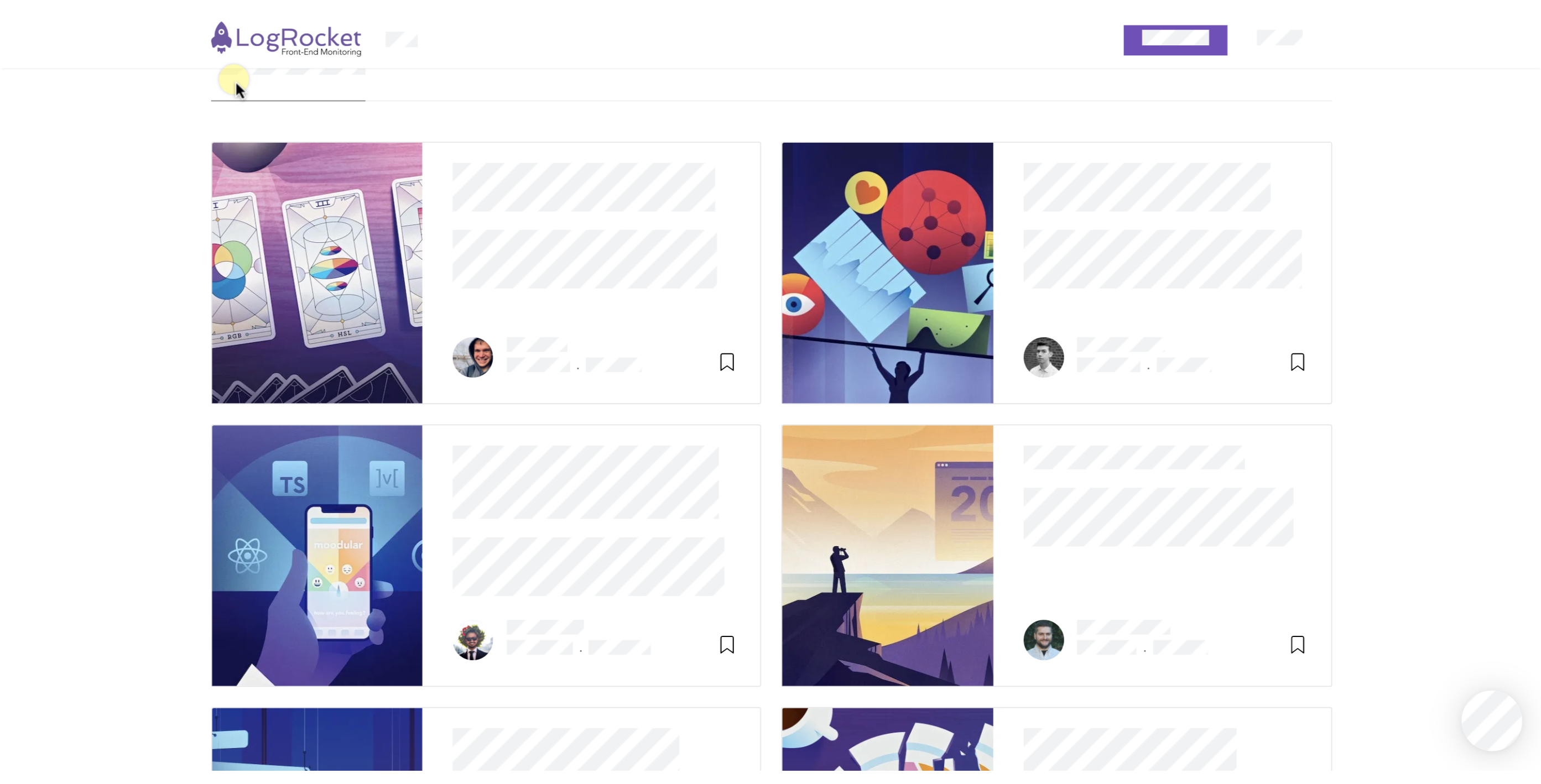Control how LogRocket records the DOM
LogRocket records a "video" of your users' sessions by logging diffs in the DOM via MutationObserver. The LogRocket SDK will not record input elements where type="password"; all other elements are captured by default. Sanitization of additional elements can be configured through a number of options, below.
Sanitized elements are rendered in playback with "zebra print" striping. Sanitized data is excluded on the client side, and is never sent back to the LogRocket server.
Network data is sanitized separately from the visual appearance of your site.
Sanitizing individual elements
data-private
data-privateElements with the data-private attribute are automatically sanitized. The LogRocket SDK will record the dimensions of the element (so that playback renders accurately) but no additional details are recorded about that element or any of its children.
<div data-private>
This data will <strong>not</strong> be recorded.
</div>Clicks on sanitized elements are not directly detected, but are sometimes visually recognizable in playback. Input fields with the data-private attribute will not show user inputs, and there will be no indication that the user is typing.
Sanitized elements can also be hidden fully from playback (no zebra stripes) by setting data-private="delete". This is rarely needed.
Lorem Ipsum on individual input elements
input elementsFor input and textarea elements with data-private="lipsum", the SDK will record the number of characters typed by the user and render them in the playback as if the user were typing Lorem Ipsum characters. This option is appropriate for input fields where it is important to know whether the user was actively typing and where exposing the length of the input text does not pose a security risk.
<textarea data-private="lipsum"></textarea>Sanitize all user input fields
inputSanitizer - Boolean
inputSanitizer - Booleanoptional (default - false)
false)With this set to true, LogRocket will automatically obfuscate all user-input elements like <input> and <select> from session recordings. None of that data will be recorded or sent to LogRocket. Note that this includes the following attributes: mailto (in an href), alt, title, aria-label, and aria-description.
LogRocket.init(YOUR_APP_ID, {
dom: {
inputSanitizer: true,
},
});Nodes can then be allowlisted with the data-public attribute. This attribute will not affect existing data-private privacy settings.
<input data-public title="this is not private"/>Using the Lorem Ipsum sanitizer by default
As with the data-private attribute, when the inputSanitizer is configured with "lipsum", user input is replaced with Lorem Ipsum to simulate content without capturing any actual user input. This option is appropriate for input fields where it is important to know whether the user was typing and where exposing the length of the input text does not pose a security risk.
LogRocket.init(YOUR_APP_ID, {
dom: {
inputSanitizer: "lipsum",
},
});
DOM data and network data are sanitized separatelySanitizing an input field will not automatically sanitize a network request that is populated with data from that field. Network requests should be sanitized separately.
Sanitize all text fields
textSanitizer - Boolean
textSanitizer - Booleanoptional (default - false)
false)With this set to true, LogRocket will automatically obfuscate all text nodes from all session recordings. None of that data will be recorded or sent to LogRocket. Note that this includes the following attributes: mailto(in an href), alt, title, aria-label, and aria-description.
Nodes can be allowlisted with the data-public attribute. This attribute will not affect existing data-private privacy settings.
LogRocket.init(YOUR_APP_ID, {
dom: {
textSanitizer: true,
},
});<textarea data-public>This is not private</textarea>
Sanitize by attribute
privateAttributeBlocklist String[]
privateAttributeBlocklist String[]optional (default - null)
null)You may want to disable recording elements based on specific attributes (for example, for third party tracking tools). To achieve this you must pass a list of those attributes to the config. These elements will not be recorded, including all user input on them. They act just like data-private.
LogRocket.init(YOUR_APP_ID, {
dom: {
privateAttributeBlocklist: ['data-hide-this']
},
});
// will not record: <div data-hide-this></div>Sanitize by CSS Class Name
privateClassNameBlocklist String[]
privateClassNameBlocklist String[]optional (default - null)
null)You may want to disable recording elements based on specific CSS Class Names. To achieve this you must pass a list of those classNames to the initialization config. These elements will not be recorded, including all user input on them. They act just like data-private.
LogRocket.init(YOUR_APP_ID, {
dom: {
privateClassNameBlocklist: ['class-hide-this']
},
});
// will not record: <div class="class-hide-this"></div>Disable Recording Specific Attributes
hiddenAttributes String[]
hiddenAttributes String[]optional (default - null)
null)For more fine-grained control, you can configure LogRocket to ignore specific HTML attributes instead of an entire element by using the hiddenAttributes value. For any attribute name matching one of the provided strings, neither the attribute name nor value will be recorded by the SDK.
LogRocket.init(YOUR_APP_ID, {
dom: {
hiddenAttributes: ['hidden-value']
},
});
// the element:
// <div hidden-value="foo" shown-value="bar"></div>
// will be recorded as:
// <div shown-value="bar"></div>Disable DOM Logging
isEnabled - Boolean
isEnabled - Booleanoptional (default - true)
true)In the rare scenario in which you would like to disable all DOM recording regardless of class or attribute, you may set isEnabled to false
Disabling DOM logging will cause session replay to be blank for that pageNetwork requests, console logs, and a few pieces of performance data will continue to be recorded, but any page recorded with
isEnabled: falsewill be completely blank, and will have no clicks or other interaction events recorded at all.
LogRocket.init(YOUR_APP_ID, {
dom: {
isEnabled: false,
},
});_lr-hide (legacy)
_lr-hide (legacy)DOM trees containing the _lr-hide class are also automatically sanitized, similar to data-private. _lr-hide is no longer our recommended sanitization technique. Note that DOM trees sanitized via _lr-hide are not visualized with zebra stripes, but instead are entirely excluded from the replay visualization.
